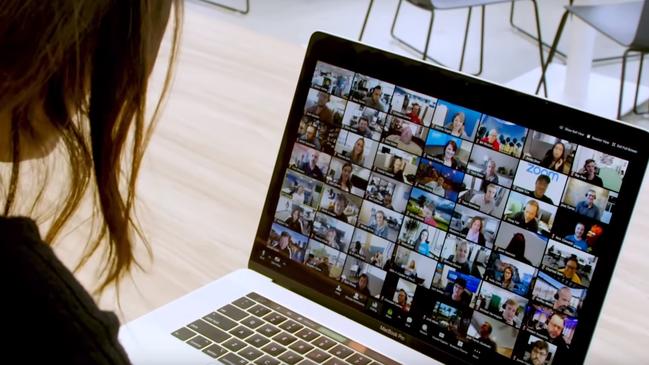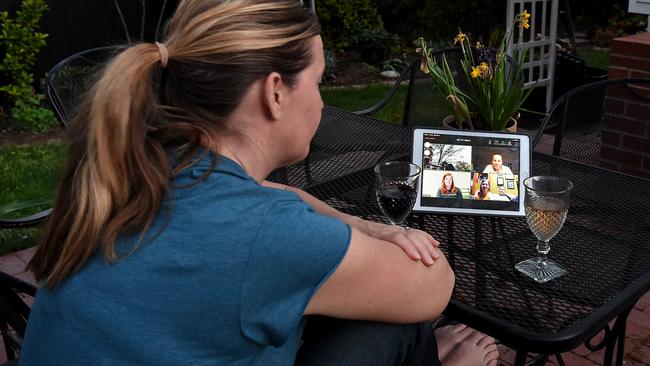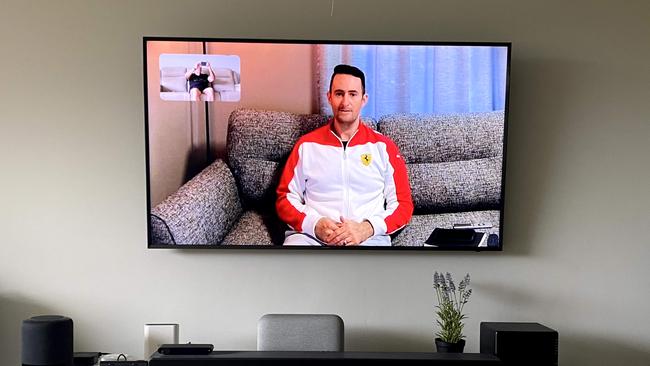It’s a good time to check out video and messaging technology
It’s a good time to check out video and messaging technology. Here are some of the best we’ve tested.

Right now is a good time to check out video and messaging technology. Let’s look at some of the options.
ZOOM
Zoom video calling (zoom.us) has grown dramatically during the pandemic. Founder and chief executive Eric Yuan says Zoom grew from 10 million daily meetings in December last year to more than 200 million by last month. That explosion of use revealed security flaws as hackers disrupted meetings. Weak encryption and concern about the routing of some sensitive data through China added to the angst. Some government agencies and corporations banned Zoom for work use. Zoom says it has suspended development to concentrate on fixing flaws. For most people, though, there’s no real need to cancel your family meeting on Easter Sunday. Zoom’s advantage is ease of use, wide-ranging features and a generous free plan. You can invite people to meetings simply by sending them a browser link; great for those who aren’t confident with technology. The free Zoom plan lets you host up to 100 participants in a video call, hold unlimited one-to-one meetings, share your screen and applications, and deliver presentations. You can record meetings and hold group chats. But it has a time limit of 40 minutes. Zoom has a popular feature called “breakout rooms”. A meeting host can split participants into small groups so they can hold discussions before rejoining the plenary meeting. The lure for business is ease of scheduling : Zoom’s plugins let you schedule meetings as you create calendar entries in Google Calendars and Outlook.
GOOGLE HANGOUTS/HANGOUTS MEET

If you’re in a work environment that uses Google’s G Suite subscription service, you have access to Google Hangouts, which offers chat and video calling. Hangouts is one of several apps in a confusing line-up of Google text and video calling services. There’s the Google Messages texting app. There’s Google Duo, which offers face-to-face video calls for up to eight people and is primarily for personal use. Hangouts is part of G Suite and, on computers, is located below your mailboxes in the Gmail app. It is available as an app for iOS and Android phones and tablets. Hangouts lets you video call one or several users. To add to the confusion, this is all due to change when Google replaces Hangouts as an enterprise app, replacing it with Hangouts Chat for texting and Hangouts Meet for videoconferencing. The replacements are better. Ordinary Hangouts lets you video call a small group of people whereas Hangouts Meet lets you video call up to 250 participants and live stream to as many as 100,000 users. Users also can dial into meetings. In fact you can include a Hangouts Meet meeting link when you create a calendar entry, as with Zoom.
CISCO WEBEX MEETINGS

Communications giant Cisco is a well-established player in this space. Webex established its videoconferencing services in the mid-1990s and Cisco acquired Webex in 2007. Interestingly, Zoom founder Eric Yuan was an engineer at Webex. Cisco, too, has experienced dramatic growth with the pandemic. It cites more than 14 billion person-meeting minutes and 324 million participants last month alone. About 3500 public schools, more than one million students and 115,000 teachers will use its secure virtual classroom tech for accessing online education in Australia. Cisco is offering free Webex meetings with 100 participants for the next 90 days. You get HD video, screen sharing and a personal room. Setting up a meeting is easy. From within the app, you list the email addresses of all participants and Cisco sends out invitations, linking people in at the appropriate time. You can insert meeting details into calendar invitations. Cisco says Webex meetings uses end-to-end encryptions for calls.
OTHERS
Microsoft Teams, LogMeIn, GoTo Meeting and Slack offer videoconferences targeting business. FreeConference.com by Iotum supports up to 15 web participants and 1000 call participants with screen sharing, meeting chat and document sharing.
PERSONAL OPTIONS

If you have hundreds of friends on Facebook, the easiest way to video call them may be Facebook Messenger. WhatsApp and Instagram also support video calling. There’s Apple FaceTime, and of course Skype, once the dominant consumer choice. Skype owner Microsoft says the platform is thriving anew, with a 70 per cent rise to 40 million people in one month. Last week Facebook launched new Messenger desktop apps for MacOS and Windows to make Messenger video calling easier on computers. Some smart TVs may offer video-calling apps. You can access apps through a connected set-top box. If you use FaceTime on an Apple device, you can use AirPlay to beam calls to a TV through a connected Apple TV set-top box. You can also link your device to a TV using an adaptor and HDMI cable. You can install a Facebook Portal TV to access Messenger video on the big screen.


